Sydney Harbour ferry master Philip Barnett’s life on the water
With Sydney Harbour as his office, going to work is never a chore for ferry master Philip Barnett — even though it’s not always literally smooth sailing.
Lifestyle
Don't miss out on the headlines from Lifestyle. Followed categories will be added to My News.
With every sunrise Sydney Harbour ferry master Philip Barnett is reminded just how lucky he is. Born into a family with the ocean running through its veins, his earliest memories of the water are of being taught to sail by his father at Double Bay Sailing Club as a wide-eyed eight-year-old.
Fast-forward to today and the now 60-year-old is still living out that childhood passion in the best office in the world, and loving every minute of it.
It was an obvious progression – Barnett’s great-grandfather, grandfather, father and, now his son, are all shipwrights.
“You can’t beat those early mornings in summer and the beautiful sunrises,” he tells Sydney Weekend.
“You can be departing Circular Quay and you’ve got the Sydney Harbour Bridge on the left and the Opera House on the right, and everyone’s beginning their day as you fly past them. It’s pretty special, especially when the weather’s calm.”

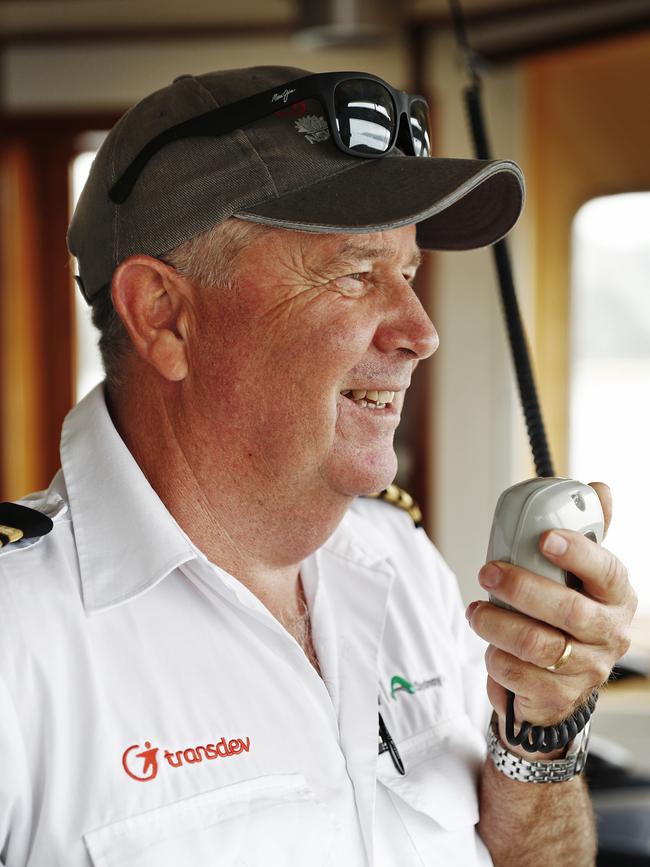
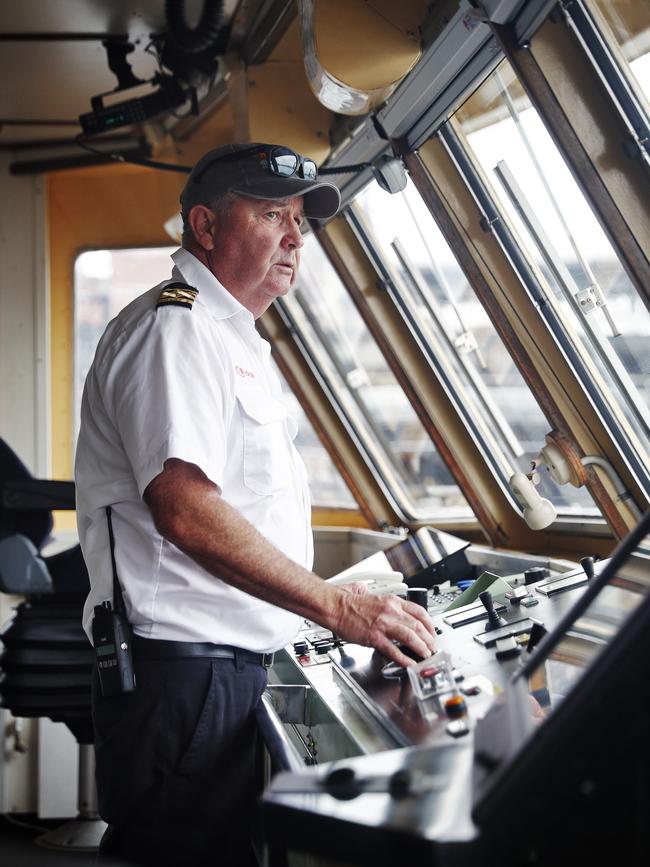
Dolphins, whales and fur seals accompany Barnett on his daily pilgrimage from Circular Quay to Manly and back again, and over the years the water has gotten cleaner and clearer, allowing for more marine life.
“We can start at four or five in the morning to get some of the first ferry services out, and then we can work as late as two in the morning,” the inner west father-of-three says.
“We see quite a bit of animal life on the harbour that people just don’t see because we’re out there all the time, and even we get surprised.
“There are some big New Zealand fur seals living in the harbour at the moment. I’ve seen bull sharks and we’ve had to drive around whales who just stick their heads into the harbour during whale season.
“A few years back, a whale went almost right up to the National Maritime Museum in Darling Harbour, which was amazing.
“That’s the nice thing about working on the harbour. It is cleaned up a lot from an environment perspective over the years so I see a lot more fish and a lot more dolphins going further up the harbour as well.”
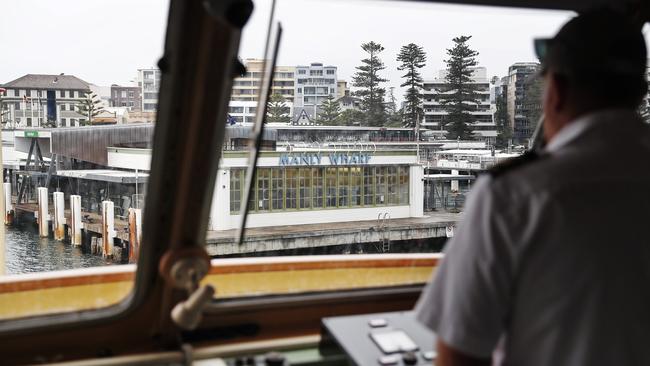
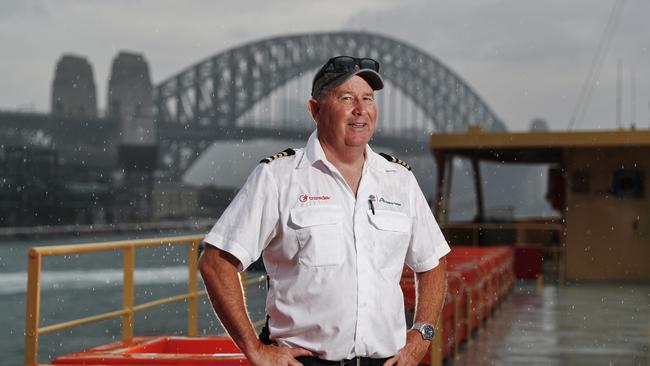
The pandemic didn’t stop the ferry service, with Barnett and his colleagues working right through to ensure they were always available for essential workers. But the past two years have been much quieter than usual.
“We really didn’t miss a beat,” he says.
“But we saw a lot of people starting to work from home (who) didn’t need to commute on the ferry, so numbers were down, and of course there were no tourists either.
“Especially with the 5km rule – people who were travelling on the Manly ferry had to have a very good reason to be there, so we were transporting essential workers to work, and social distancing cut our numbers down a lot as well.”
Some late nights Barnett and his crew had the harbour to themselves, their empty ferry ghosting across the dark water – there in case someone needed them.
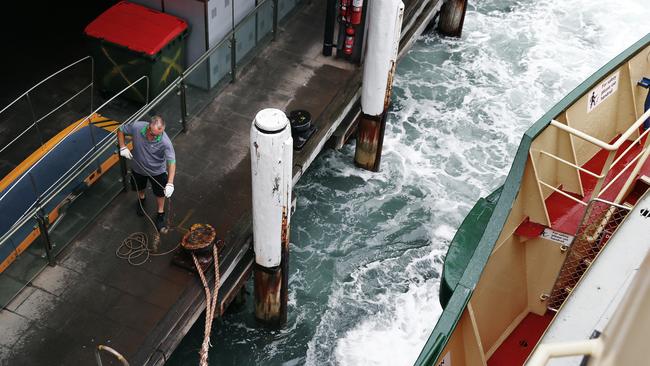
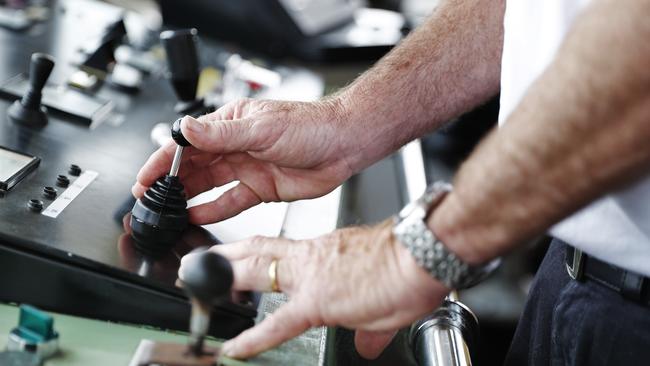
Despite its constantly changing beauty, life on the harbour isn’t always smooth sailing. Poor weather ensures captain and crew earn their keep.
“A very contentious point at the moment with the new Manly Ferries being launched is the poor weather conditions that you can strike between Sydney Heads. It’s only a short distance, but we can tackle 5m swells, 40 knots of wind and driving rain,” Barnett says.
“You’ve got to be on your A-game when you’ve got an 80m ferry that weighs 1100 tonnes with passengers on board … that’s where experience comes in.
“You’ve got to use all your marine skills once the weather changes. You’re always worrying about the vessel breaking down, how the passengers are travelling downstairs, and you’re always trying to think two steps in advance just in case something goes wrong.”
Bad weather makes a ferry behave differently, Barnett explains.
“It pushes them around a little bit – and they’re not just a little puppy you can make sit in the corner, they’re like the red cattle dog chasing the cows sometimes.”
Ferry captains – alongside a crew of six, including a dedicated engineer and three deckhands to tie the boat up and manage passengers – are like airline pilots, trained on intricacies when changing from boat to boat, with emergency drills and training reinforced every six months.
It is a job more young boaties aspire to than ever before and for good reason, Barnett says.
“It’s a good job, you know. It’s quite well paid and it’s a good, safe place to work. There are a lot of young kids trying to get into the industry, and I enjoy training and imparting my knowledge to them.”
All in the same boat
Barnett traces his own history with Sydney waters back to his ancestors rowing their skiffs from McMahons Point to Circular Quay while the Harbour Bridge was being built.
He, along with his father and great-grandfather, were all skiff racing champions, with Barnett winning the prestigious 18-foot skiff JJ Giltinan trophy three times over his racing career.
But the shipwright gene skipped a generation with Barnett, who trained as a carpenter before being pulled back to the water, working his way up to captain one of the harbour’s most famous vessels.
“I started as a carpenter but I was always sailing. Before I was professional, I had to sail during the day and needed to work of a night. So I started working on charter boats on Sydney Harbour at night, working behind the bar and earning a few bucks to keep my sailing going,” he says.
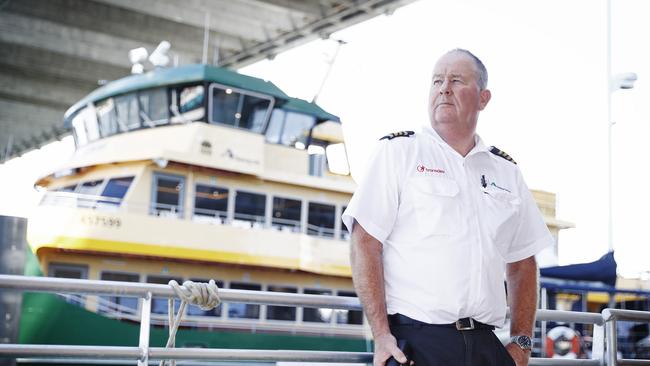
“That led me from being a barman on a charter boat to getting my commercial licence, which I’ve had for at least 40 years now.
“I ended up sailing professionally for about five or six years, and that’s when I gave up the carpentry. After the professional sailing finished, I started managing a couple of charter vessels on Sydney Harbour and I did that for another 10 years. Then I went to Sydney Ferries (now Transdev NSW) about 11 years ago.
“I was hoping that could be a place where I’d like to retire from as a Manly ferry captain, and I’ve sort of lived that dream. You start on little boats and everyone dreams of driving the Manly ferry as an ultimate goal – and I got there.”
When he’s not working – not that he calls it work – Barnett likes to tinker on his beautiful 26ft timber cruiser Sternline, built 58 years ago by his father’s second cousin, Billy Barnett, another renowned shipwright, and the “famous” one in the family.
“I actually got to go to Billy’s 100th birthday which was amazing, but he’s passed away now,” Barnett says.
“Billy is one of our famous relatives. There is a lot about him in the National Maritime Museum – he built an America’s Cup class yacht, and it was very exciting back in the day.”
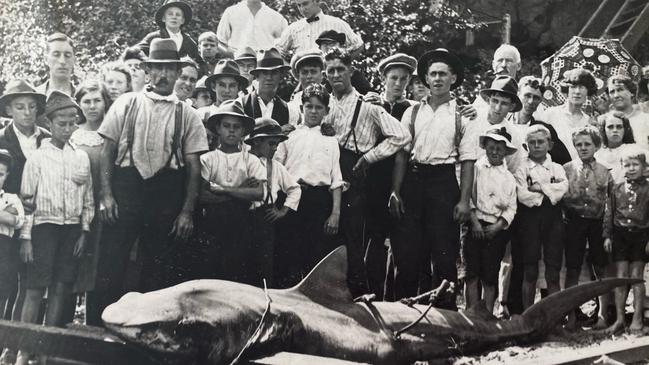

Billy was famous indeed.
One of Sydney’s finest wooden boat builders of his time, he designed, built and raced 18ft Myra Too to glory in 1951. That was the boat the Maritime Museum built a replica of in 2013 after it was destroyed in a 1971 fire that tore through Billy’s McMahons Point boat shed. He also built the 12m yacht Dame Pattie for the 1967 America’s Cup.
“So my great-grandfather, grandfather and father were all shipwrights, and my 25-year-old son Daniel is as well – the difference being my dad, grandfather and great-grandfather were all traditional timber shipwrights, whereas my son did his apprenticeship and moved into an area of composite materials with all the specialised carbon fibre,” Barnett says.
“He works exclusively on racing yachts and Sydney to Hobart … yachts like Wild Oats, so he’s found his own little niche there, still on the water.”
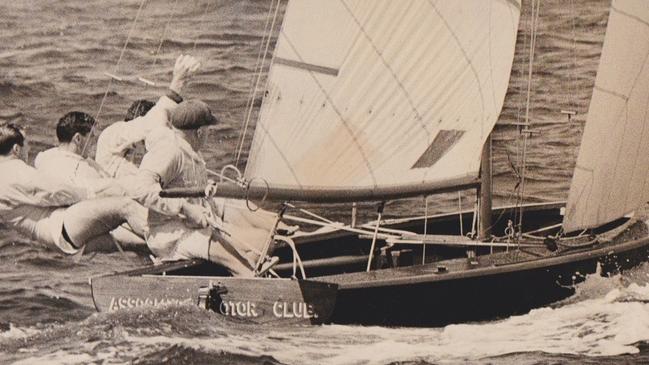
Daniel and his two sisters learned to sail at Hunters Hill Sailing Club with their dad, and all enjoy family days on the water.
“There are some days on the harbour when you will be cruising along and there will be no one else out there, and yet here we are,” Barnett says.
“How many people live in NSW? Six million people? It can be 11am and hardly anyone is on Sydney Harbour, because everyone’s busy.”
He’s done one Sydney to Hobart himself, back in 1983, but it was a “stormy” race and the boat was forced to retire without finishing.

He’s sailed in England and New Zealand and other parts of the world, and loves exploring the Whitsundays during Airlie Race Week.
After retirement, which is maybe a year or two away, Barnett is contemplating moving out of the hustle and bustle of Sydney and putting his carpentry skills to good use, building a house on the south coast and spending time on his “boating projects”, of which there are too many to list.
He lost his dad six years ago after a “pretty good life”, and when he thinks back, it was their time together on the water that solidified the father-son relationship.
“It’s always sad losing your dad, but when I think back about it, I think he really enjoyed teaching my brother and I boating,” he says.
“He spent a lot of time in the later years of his racing career teaching us how to sail, so we were pretty lucky really, and I’ve done the same with my own kids, which is pretty special.
“I’ve got a nice garage here at home and I can go in there, put the radio on and fix and tinker with little bits and pieces for the boat.
“So that’ll be a happy day. And it might even end with a cold beer.”





